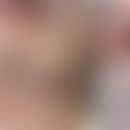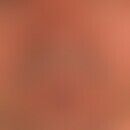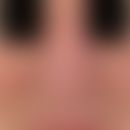DefinitionThis section has been translated automatically.
Grinding or milling of the skin with a high-speed grinder to remove the superficial skin layers. Maximum grinding depth for scarless healing: stratum papillare.
General informationThis section has been translated automatically.
Depending on the indication, size of the skin finding and body part, the grinding head must be varied (e.g. wire brushes, diamond or carborundum milling cutters). Only diamond or carborundum milling cutters should be used on the face. For deep milling, e.g. for tattoos, metal cutters as well as nylon and wire brushes are suitable. If the tattoo is dirty, dermabrasion should be performed immediately, i.e. within the first 48 hours before inflammatory changes develop. Because of possible subsequent pigment irregularities, dermabrasion should preferably be applied in the autumn and winter months.
You might also be interested in
IndicationThis section has been translated automatically.
Dermabrasion is particularly suitable for superficial skin changes such as burnt acne (face), rhinophyma, congenital melanocytic nevi (in infancy), systematized epidermal nevi, adenoma sebaceum, extensive lentigines simplices, seborrhoeic keratoses, Favre-Racouchot disease, scars, foreign body bursts, decorative tattoos, perioral wrinkles, skin amyloidosis. In the case of skin alterations that extend beyond the epidermis, often only temporary improvements can be achieved.
ImplementationThis section has been translated automatically.
- Depending on size and localisation, under local anaesthesia, block anaesthesia or general anaesthesia. Tension the skin, guide the grinding head in the direction of the axis of rotation. The grinding depth is controlled by pressure on the grinding head and the rotation speed. In the case of ablation up to the upper dermis, a characteristic point-like hemorrhage appears due to the grinding of the papillary vascular plexus. In difficult localization as well as with thin skin, low speed grinding with little pressure is recommended. Caution! Roll up mobile parts such as hair, eyelids, compresses! At such soft tissue sites the skin must be rolled outwards with the rotation. Cool with saline solution as often as possible before, during and after grinding. Grinding of very small areas under icing anaesthesia possible. A preliminary test grinding of approx. 1 cm2 is recommended, especially for cosmetic indications.
- After treatment: Depending on the depth of the grinding, a fatty gauze dressing (e.g. Oleo-Tuell), possibly also surface-smooth viscose-fibre dressings (Adaptic) or hydrocolloid dressings (e.g. Varihesive extra thin). First dressing change after 2 days, wait for epithelialisation, then apply a nourishing O/W cream (e.g. Ungt. emulsif. aq.). After healing, apply consistent light protection (e.g. Anthelios, Eucerin Sun, Microsun) for approx. 6-9 months!
Complication(s)This section has been translated automatically.
Milia, persistent erythema, hyperpigmentation, hypopigmentation, scars, keloids, herpes simplex exacerbations, bacterial superinfection, hypertrichosis.
Note(s)This section has been translated automatically.
Devices available e.g. from: Fa. Aesculap, Am Aesculap-Platz, 78532 Tuttlingen.
LiteratureThis section has been translated automatically.
- American academy of dermatology committee on guidelines of care (1994) Guidelines of care for dermabrasion. J Am Acad Dermatol 31: 654-657
- Gold MH (2003) Dermabrasion in dermatology. At J Clin Dermatol 4: 467-471
- Lee WR et al (2003) Lasers and microdermabrasion enhance and control topical delivery of vitamin C. J Invest Dermatol 121: 1118-1125




